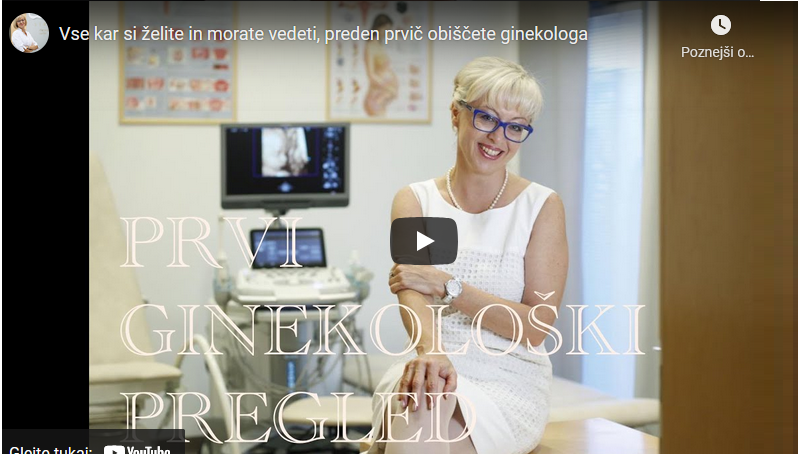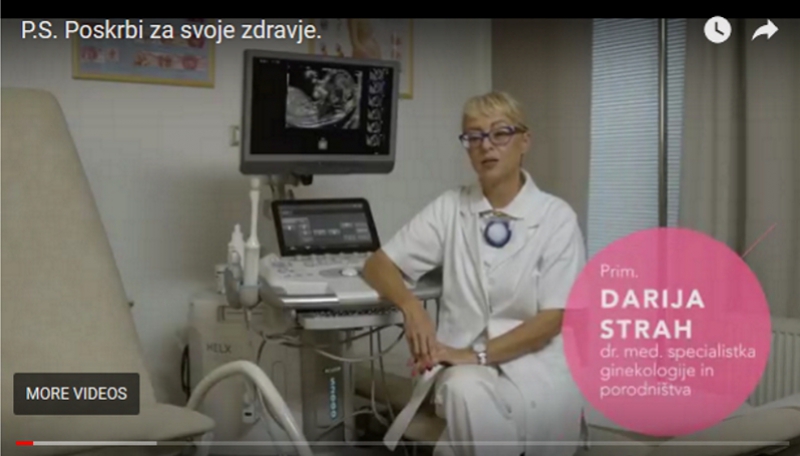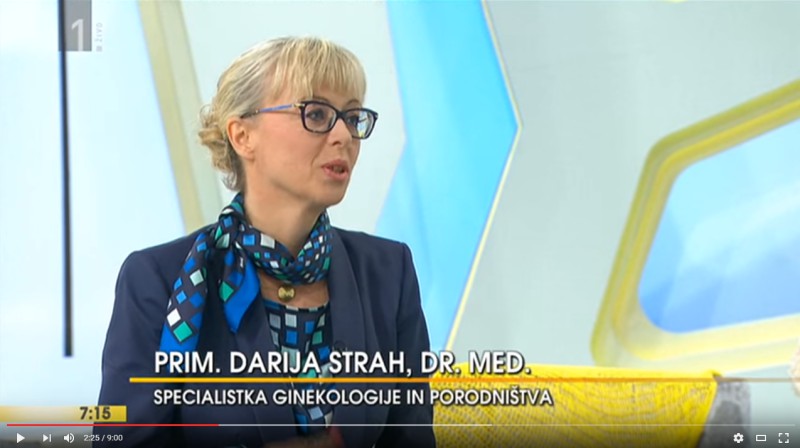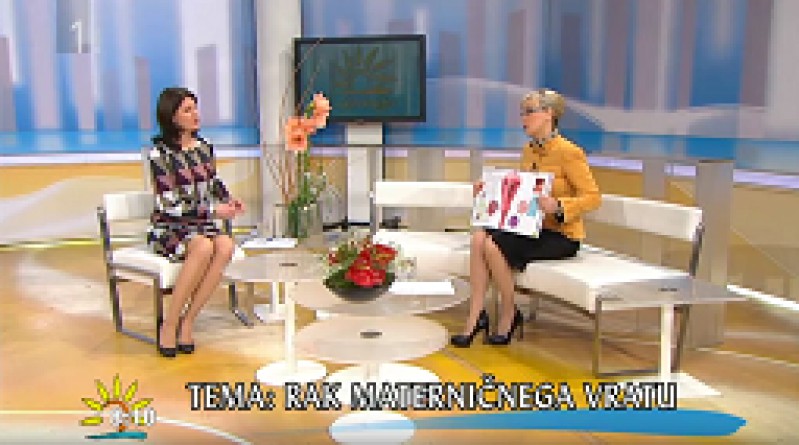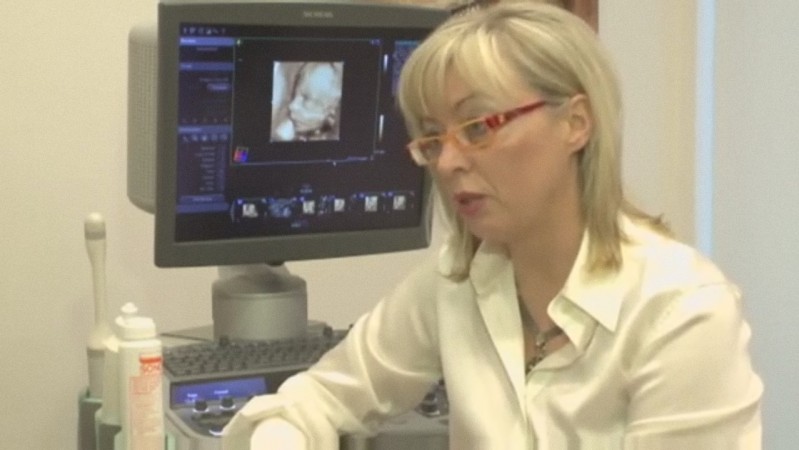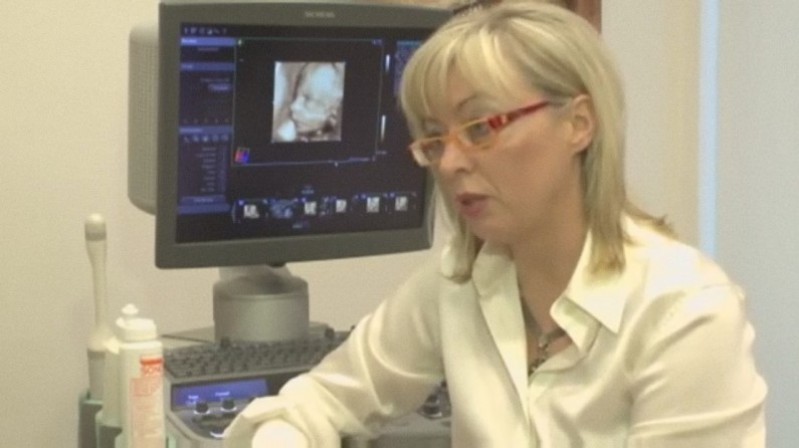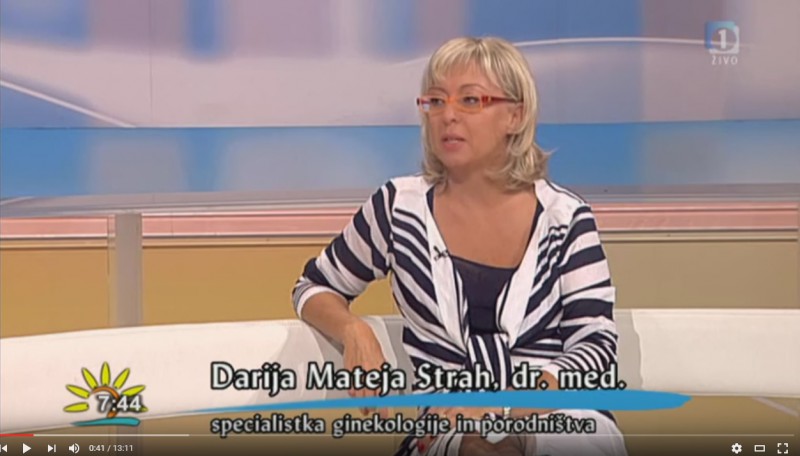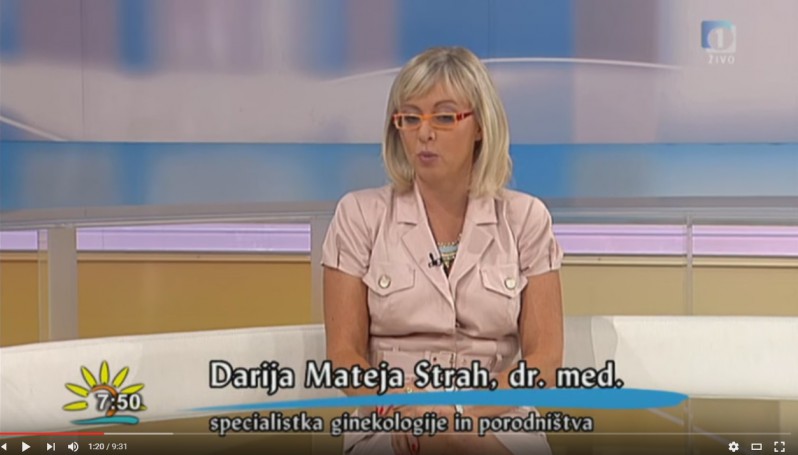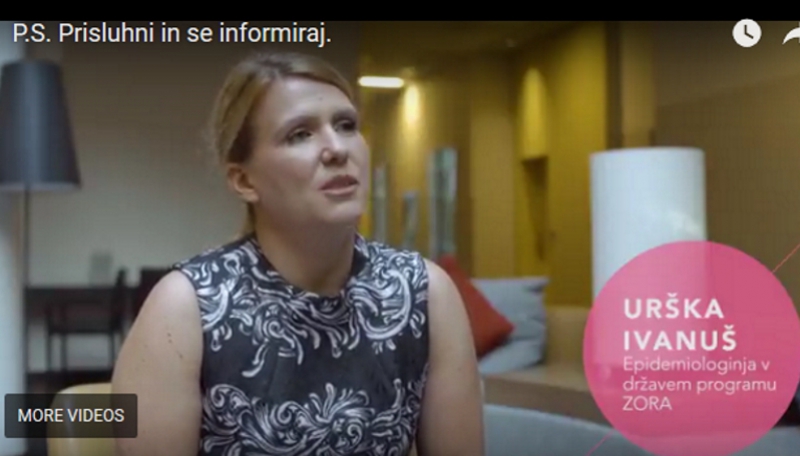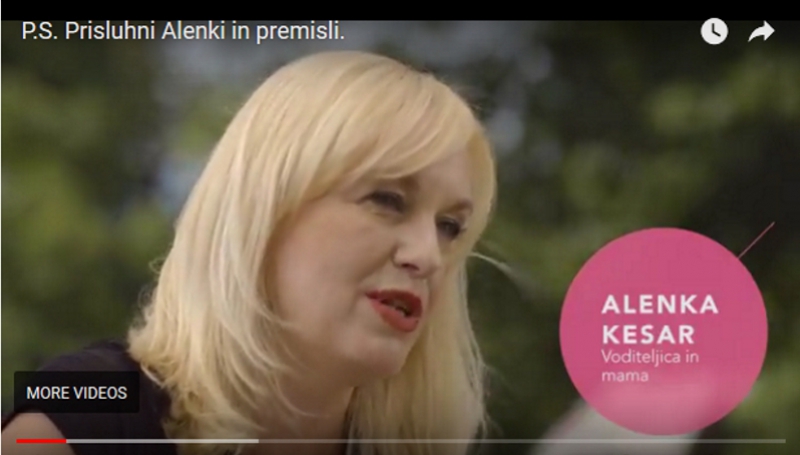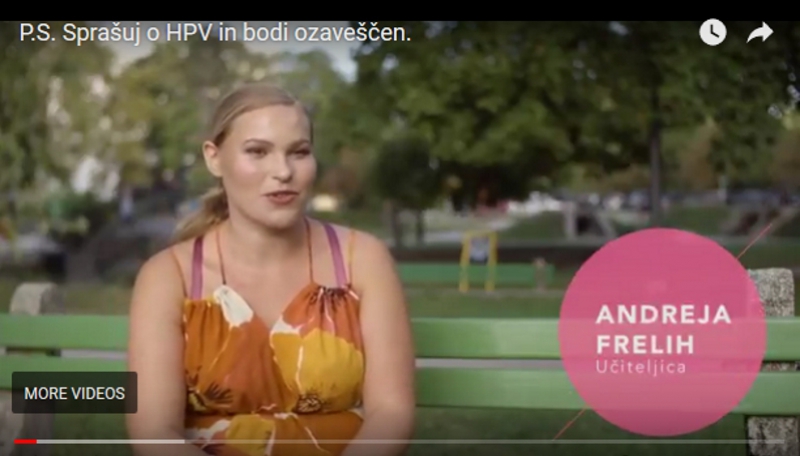Risk assessment of trisomy 21 by maternal age and fetal nuchal translucency
Darija M. Strah (1), Maja Pohar (2) and Ksenija Gersak (3)
- Obs/Gyn Oupatient Clinic ZD Domzale, Slovenia
- University of Ljubljana, Faculty of Medicine, Institute of Biomedical Informatics, Slovenia
- Department of Obstetrics and Gynaecology, University Medical Centre Ljubljana, Slovenia
Abstract
Aim: To evaluate the screening for trisomy 21 by maternal age and nuchal translucency in a low-risk population.
Methods: Screening was performed in 7096 singletonpregnancies. The estimated risk for trisomy 21, thedetection rate (DR), false positive rate (FPR) and the cutoff nuchal translucency thickness to obtain a 5% FPR were calculated.
Results: The median maternal age was 28.6 years. The estimated risk for trisomy 21 was 1 in 300 or greater in 2.4% (171 of 7096) of all pregnancies and in 75% (9 of 12) of trisomy 21 pregnancies. The DR for all aneuploidies was 83.3%, and 75% for trisomy 21. The estimated FPR at risk 1 in 300 for the whole population in 2004 was 3.8%. It is predicted to remain below 4% at least until 2007; to achieve a 5% FPR in 2007 the risk limit 1 in 400 is proposed.
Conclusions: Screening for trisomy 21 in a low-risk population in Slovenia gives comparable results to those in other countries. The only result that varies is the percentage of screen positive patients at the risk limit 1 in 300. We believe the risk limit should be specifically estimated for each country based on its population distribution of maternal age.
Keywords: Chromosomal abnormalities; nuchal translucency; trisomy 21.
Introduction
In recent years the implementation of first trimester screening for detecting fetal chromosomal abnormalities by nuchal translucency (NT) thickness and maternal age in both high and low-risk populations has been described w1, 15, 17x. At 11–14 weeks of gestation the fetal NT thickness is above the 95th centile of the reference range for fetal crown-rump length in about 70% of fetuses with trisomy 21 and other major chromosomal abnormalities [1, 12]. When combined with the maternal age to estimate the risk for trisomy 21, the sensitivity derived from the screening study in the UK w1x at a median maternal age 34 years was 73% for a false positive rate (FPR) of 2%.
Effective screening necessitates appropriate training of sonographers and uniformity of obtaining the measurements according to the criteria recommended by The Fetal Medicine Foundation [1, 10, 17]. This study reports the first assessment of the risk of trisomy 21 by combining maternal age and fetal NT thickness at 11–14 weeks’ gestation in 7096 unselected pregnancies in Slovenia since screening was also offered to the low-risk pregnant population (1999). The Slovene maternal ages were used to predict the FPR as well as the appropriate cut-off value for the low-risk pregnant population [9, 18].
Subjects and methods
We included all women booked at one of the two major outpatient clinics in Slovenia for ultrasound examinations during pregnancy between 29 November 1999 and 9 May 2006. Screening for fetal chromosomal abnormalities using the first trimester approach was offered to patients from 88 referral doctors. The personal gynecologists had a short pre-test counselling and the patients received an information leaflet about the ultrasound examination and the aim of screening.
This sample represents unselected pregnancies. The population consisted of 100% Caucasians, reflecting the very homogeneous racial structure of the Slovene population. However, the sample is not representative with respect to the maternal age, as the older women (35 years or more) often choose a tertiarycenter for fetal diagnostics, where they are entitled to free screening tests. Another possible bias could appear due to noninclusion of women who could not afford such tests, but this bias is impossible to assess because the unknown possible correlation between social status and the variables measured in our study.
At the visit between 11 and 14 weeks of pregnancy, patients gave detailed demographic and medical data, which were subsequently entered into a computerized database. Two experienced sonographers, holding the Fetal Medicine Foundation Certificate of Competence carried out the scans [8].
Transabdominal ultrasound examination was carried out in about 99% of the cases and was completed within 20 min. In 1% of the cases a transvaginal ultrasound examination was performed. If the fetal CRL was -45 mm, a new appointment was made, whereas if the fetal CRL was more than 83 mm, only a detailed ultrasound scan was performed and the information about second trimester biochemical test was given as suggested by Robinson and Fleming [12].
Though first trimester biochemical test is gradually introduced in Slovenia, we only have data on 15% of our patients, and have therefore decided to exclude this information in the present study.
Ultrasound examinations were performed using 3.5–5 MHz and 8–4 MHz transducers Toshiba Corevision Pro, Tokyo, Japan and 2–5 MHz and 9.3–3.7 MHz transducers GE Healthcare Voluson 730 Pro, Milwaukee, WI, USA.
Inclusion criteria
A total of 7522 women were included, all with live singleton pregnancies, from 11 to 14 weeks’ gestation and with a CRL of 45–83 mm. Twin pregnancies (1.8%, 134 of 7522) and stillbirths (0.5%, 37 of 7522) were excluded. The CRL was beyond 83 mm in 0.4% (30 of 7522).
Pregnancy outcomes were obtained from participating women, referring gynecologists, pediatricians and maternity units, and are missing in 3% (225 of 7522) of cases.
Karyotype results were reported from the cytogenetics laboratory. All further analyses include 7096 women.
Statistical methods
Risks were calculated according to the FMF programme and following the FMF guidelines [7, 12, 14, 16]. The distribution of maternal age was compared to that of the pregnant population in Slovenia for the time interval 2002–2004 [18]. We calculated the sensitivity, FPR, positive predictive value and negative predictive value for a cut-off risk of 1 in 300, calculated for trisomy 21, 13 and 18 at the time of testing. We used the Slovene population data to predict the FPR (Table 1).
To evaluate the quality of our data, we compared the median of the NT distribution (conditional on CRL) in our data with the normal median NT distribution presented in FMF algorithm 2005 [7, 12, 14, 16].
A simulation was performed to predict the FPR for the whole population in a certain calendar year. At each simulation run, a sample of 2000 women was chosen randomly from our data,

with probability weights taken from the population’s maternal age distribution. In this way, a sample from our data with the age distribution reflecting that of the population was obtained. Taking into account the size as well as the age distribution in our sample, we opted for the sample size ns2000 for our simulations to establish variability. Repeating this simulation ns1000 times, we thus calculated a bootstrap distribution of the FPRs for a cut-off risk at 1 in 300 as well as the distribution of the risk limits for the 5% FPR. Details of the assumptions required for the simulations are given in the Appendix.
Results
Age distribution
The median maternal age was 28.6 years (range 15–42, Figure 1), similar (28.5) to the age distribution in the pregnant population in 2002–2004 in Slovenia w9, 10, 18x. The population however, varies with 50% of the sample being between 26 and 30 years compared to the population with the middle 50% between 25 and 31. In our sample only 2.5% of pregnant women were 36 years and older compared to the 11.6% of the whole population in the same calendar period. Only 1.3% was aged 37 years and older compared to the 7.6% in the population.
Screening results
The median gestational age was 12 weeks 4 days (range 10 weeks 5 days to 13 weeks 6 days), the median fetal CRL was 63 mm (range 45–83 mm), and the median NT thickness was 1.6 mm (range 0.7–9.1 mm).
The distribution of NT for fetal CRL in normal pregnancies and pregnancies with fetuses affected by chromosomal abnormalities is shown in Figure 2. The NT was above the 95th centile of the normal range for the CRL in 67% (8 of 12) of trisomy 21 pregnancies and in 67% (4 of 6) pregnancies with other major chromosomal abnormalities.
The estimated risk for trisomy 21, based on maternal age and fetal NT was 1 in 300 or higher at the time of testing in 2.4% (171 of 7096) of all pregnancies. Nine women out of 171 (5.2%) refused invasive testing and all 9 neonates were born normal, as assessed by pediatricians. Amniocentesis as an invasive diagnostic test, performed at 16 weeks of gestation, was done in 90.6% (155 of 171). Chorionic villous sampling was performed in the remaining patients. A total of 156 cases (2.2%) were false positives. There were 8.7% (15 of 171) of chromosomal abnormalities identified by invasive testing in the high-risk pregnancies group, or one case detected per 11 invasive diagnostic procedures.
We detected 15 out of 18 abnormal cases (83.3%). Trisomy 21 was diagnosed prenataly and postnataly in 12 cases as shown in Figure 2. Among women with an estimated risk of 1 in 300 or greater, there were 9 cases of trisomy 21 and all pregnancies were terminated.

Figure 1: Maternal age distribution of the study population (black) compared to the age distribution in the pregnant population (gray) in Slovenia in 2002–2004.
The detection rate for trisomy 21 was 75% (9 of 12), with a positive predictive value of 5.2% (9 of 172) and negative predictive value of 99.9% (6922 of 6925). The positive predictive value for all major chromosomal abnormalities was 8.7% (15 of 172).
On the basis of maternal age and gestational age at the time of screening it was estimated that in the 7096 pregnancies examined there would have been 13 cases of trisomy 21 and approximately the same number of other chromosomal abnormalities, a figure similar to the observed 12 cases.
Among women with an estimated risk of -1 in 300 there were three live born infants with trisomy 21. The NT thicknesses were 2.2 mm in two of the cases and 2.0 mm in the third.
Quality of data
The delta NT was calculated based on the CRL values and the normal NT distribution table provided by the FMF algorithm [7, 12, 14, 16], with negligible discrepancies, i.e., median delta NT in our data being equal to 0.0057, suggesting that data were accumulated with great precision.
Prediction of the FPR
To estimate what should the risks in Slovenia be, as well as to establish how the false positives percentage will change in time, we performed a simulation (Figures 3 and 4).
The maternal age of the Slovenian pregnant population is rising progressively. In 1982 4.9% of the pregnant population was G35 years at the time of the delivery as opposed to the 6% in 1992 and 11.2% in 2002 [18]. Nevertheless, women still tend to be younger than in other studies w1, 2, 4, 6, 9–11, 15, 17x, and, more importantly, younger than in England, from which the 1 in 300 risk was recommended in order to obtain 5% FPR [7, 12, 14, 16]. The estimated false positive rate for Slovenia is therefore expected to be lower, indeed in the year 2004 it equals 3.8% (95% confidence interval 3.1, 4.55).
Because of the constantly increasing maternal age, the false positive rate is also constantly increasing in a nearly linear trend. However, despite increasing trend, the expected percentage of false positives remains under 4% throughout the period for which population data are available. The same trend can be seen from Figure 4.
The estimated risk that would give 5% FPR in 2004 is 1 in 430 (95% CI 1:350, 1:500).
Discussion
Our retrospective study of screening for trisomy 21 and other major chromosomal aneuploidies demonstrated a detection rate of 83.3% for a FPR of 2.4%.

Figure 2: Distribution of nuchal translucency (NT) with respect to the fetal crown-rump length (CRL) in our data (small dots). The curves represent the 5th,50th and 95th expected centile. The abnormal cases are marked ((filled circle) trisomy 21, (scuare) other abnormal, (circle outline) abnormal not detected) and the ages of women are written next to their points.
As the number of abnormalities is low, the confidence intervals are rather wide; therefore no validation of the FMF algorithm is attempted. Nevertheless, the detection rate is comparable to that reported from other countries. In our sample the relationship between the FPR and detection rate is in accordance with other prediction values w1x. The FPR among our women is very low, mainly due to the fact that the sample is taken from a young population that does not represent the entire Slovene population in terms of maternal age. However, even when taking into account the population’s maternal age distribution, the FPR remains low.
According to the near linearity of the trends, one may predict for the future years, assuming that ageing of the population will keep the trend observed thus far and that the FPR will change linearly with the risk limit. Although obvious arguments against both assumptions exist, we may use the predictions as a rough guideline. Though the population is constantly ageing, we expect the p pulation FPR at risk limit 1 in 300 to remain under 4% for at least two more years. Allowing ourselves 5% FPR in the population, we could lower the risk limit to approximately 1 in 400. But, as our detection rate is more than adequate according to the FMF guidelines, we currently have no reason to change it, and we believe that any such change should also be weighted against the risk of pregnancy loss due to invasive testing.
A more precise prediction, still based on the assumptions about future maternal age distribution, could be made by using a larger sample. However, this is not possible in small populations such as the Slovenian, regarding appropriate number of pregnant women screened and the precision of the median delta NT measurements of different certified sonographers.
Our simulation shows that the FMF recommendations about the risk limit cannot be directly translated to our specific population distribution. We believe the limit that ensures a 5% FPR is constantly changing and could be adjusted within each country. To verify the changes, we suggest to repeat the simulation using a large data set, preferably the data set on which the FMF algorithm was developed. The only condition needed for such a simulation would be that maternal age, the NT and CRL distributions do not vary among countries – an assumption that we believe can be safely made.
The assessment of risk of trisomy 21 and other major chromosomal abnormalities identifies a high proportion of major structural abnormalities, some cardiac defects and a wide range of genetic syndromes were reported by several authors [1, 13, 15, 17, 19]. In addition, the 11–14 week scans confirm fetal viability, allows accurate dating, early diagnosis of multiple pregnancies, and identification of chorionicity [1, 15, 17].
Further improvement of predictions were achieved using biochemical tests [1, 17], and these are gradually introduced in Slovenia. At present, about 1/3 of the women perform these tests and this proportion is constantly increasing.
As our responsibility is to provide parents with accurate assessment of risk [3, 8]. The perception of risk of miscarrying a wanted pregnancy or the birth of a chromosomally abnormal infant is dependent upon the parents’ expectations. The final decision about how to continue pregnancy lies entirely in the parents’ hands and we must let them decide about the prospect of giving birth to a possibly affected fetus.

Figure 3: The results of the simulation estimating the false positive rate for risk limit 1 in 300 in the Slovene population with the 95% confidence intervals. The line through the points indicates a linear regression fit.
Appendix
Any simulations or predictions made hinge on the underlying assumptions. The several aspects that needed to be considered in this study are given in this appendix.
The risk calculated by the FMF audit at the time of testing is generally used [4, 9–11]. Though the FMF algorithm has been updated, this was the risk according to which women were appointed for invasive testing. The population data report the age distribution of women at birth, each mother counted only once regardless of the number of newborns [7]. As all our women are pregnant 11–14 weeks, 6 months are deducted for all. This methodology does not include women who aborted between 14 and 22 weeks, however, the percentage of these women (1.1%) is low enough to be disregarded, as suggested by Gilbert et al. [6]. Though age for the population is given in months, we rounded all ages to years, to simplify the simulation. No important discrepancies are expected due to rounding. Our simulations are performed based on the assumption that maternal age as well as the distribution of CRL and NT are independent on calendar year.

Figure 4: The results of the simulation estimating the risk (1 per number given on the y-axis) given a 5% false positive rate in the Slovene population with the 95% confidence intervals. The line through the points indicates a linear regression fit.
The calendar year in the population goes back to 1995. The only reason to includ the years for which we have no actual NT screening data is to have a better idea of the pregnant population age trend. Our simulation does not, in fact, give the FPR but rather the percentage of women at high risk. As the number of truly abnormal cases is low compared to the variation in the data, the percentage of false positives is approximately the same as the percentage of high-risk. Therefore we consider the FPR, although we actually estimate the percentage of high-risk women. The confidence intervals of our estimates are intentionally large and depend on the sample size on which we estimate the 5% FPR. The sample size here was chosen to be 2000. Although we could take a larger sample, the population data require older women, who are rather few in our data. As there are -200 women above 36 years and we need nearly 8% for each simulation sample, a larger sample would mean that our estimation should depend too much on the actual values of older women and could introduce a hard-to-track bias.
References
- Bindra R, Heath V, Liao A, Spencer K, Nicolaides KH. One stop assesment of risk for trisomy 21 at 11–14 weeks; a prospective study of 15030 pregnancies. Ultrasound Obstet Gynaecol. 2002;20:219–25.
- Bower S, Chitty L, Bewley S, Roberts L, Clark T, Fisk NM, et al. First trimester nuchal translucency screening of the general population: data from three centres wAbstractx. Presented at: The 27th British Congress of Obstetrics and Gynaecology, Dublin, 1995. London: Royal College of Obstetrics and Gynaecology; 1995.
- Chuckle H. Time for total shift to first-trimester screening for Down’s syndrome. Lancet. 2001;358:1658–9.
- Economides DL, Whitlow BJ, Kadir R, Lazanakis M, Verdin SM. First trimester sonografic detection of chromosomal abnormalities in an unselected population. Br J Obstet Gynaecol. 1998;105:58–62.
- FETALMEDICINE.com: Fetal Medicine Foundation Certificate of Competence. http://www.fetalmedicine.com/ w25 October 2006x.
- Gilbert RE, Augood A, Gupta R, Ades EA, Logan S. Screening for Downs syndrome: effects, safety and cost effectiveness of first trimester strategies. Br Med J. 2001; 323:324–6.
- Hecht CA, Hook EB. The imprecision in rates of Down syndrome by 1-year maternal age intervals: a critical analysis of rates used in biochemical screening. Prenat Diagn. 1994;14:729–38.
- Nicolaides HK. Screening for fetal chromosomal abnormalities: need to change the rules. Ultrasound in Obstet Gynecol. 1994;4:353–4.
- Pajkrt E, van Lith JMM, Mol BWJ, Bleker OP, Bilardo CM. Screening for Down’s syndrome by fetal nuchal translucency measurement in a general obstetric population. Ultrasound Obstet Gynecol. 1998;12:163–9.
- Pandya PP, Goldberg H, Walton B, Riddle A, Shelley S, Snijders RJM, et al. The implementation of first-trimester scanning at 10–13 weeks’ gestation and the measurement of fetal nuchal translucency thickness in two maternity units. Ultrasound Obstet Gynecol. 1995;5:20–5.
- Roberts LJ, Bewley S, Mackinson AM, Rodeck CH. First trimester fetal nuchal translucency: Problems with screening the general population 1. Br J Obstet Gynaecol. 1995; 102:381–5.
- Robinson HP, Fleming JE. A critical evaluation of sonar ‘‘crown-rump length’’ measurements. Br J Obstet Gynaecol. 1975;82:702–10.
- Schwarzler P, Carvalho JS, Senat MV, Masroor T, Campbell S, Ville Y. Screening for fetal aneuploidies and fetal cardiac abnormalities by nuchal translucency thickness measurement at 10–14 weeks of gestation as part of routine antenatal care in an unselected population. Br J Obstet Gynaecol. 1999;106:1029–34.
- Snijders RJM, Sebire NJ, Nicolaides KH. Maternal age and gestational age-specific risk for chromosomal defects. Fetal Diagn Ther. 1995;10:356–67.
- Snijders RJM, Noble P, Sebire N, Souka A, Nicolaides KH. UK multicentre project on assessment of risk for trisomy 21 by maternal age and fetal nuchal translucency thickness at 10–14 weeks of gestation. Lancet. 1999;18:51921.
- Snijders RJM, Sundberg K, Holzgreve W, Henry G, Nicolaides KH. Maternal age and gestation specific risk for trisomy 21. Ultrasound Obstet Gynecol. 1999;13:167–70.
- Spencer K, Spencer CE, Power M, Moakes A, Nicolaides KH. One stop clinic for assessment of risk for fetal anomalies; a report of the first year of prospective screening for chromosomal anomalies in the first trimester. Br J Obstet Gyneacol. 2000;107:1271–5.
- STAT.si: Statistical Office of the Republic of Slovenia. Statistical survey on births. http://www.stat.si/eng/index.asp/ w25 October 2006x.
- Taipale P, Hiilesmaa V, Salonen R, Ylostalo P. Increased nuchal translucency as a marker for fetal chromosomal defects. N Engl J Med. 1997;337:1654–8.
Received March 20, 2007. Revised October 14, 2007. Accepted October 12, 2007.





